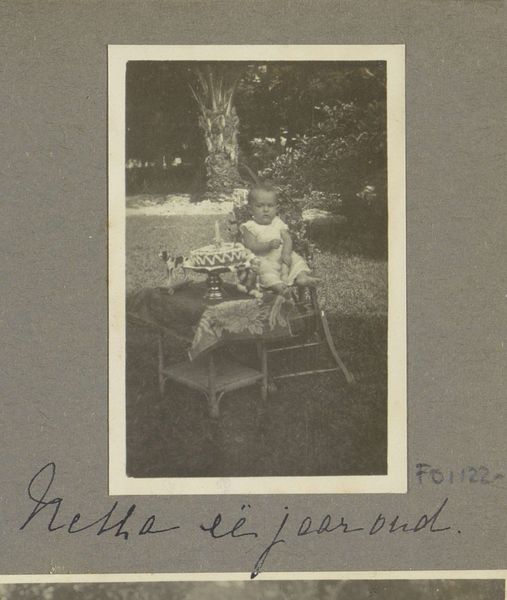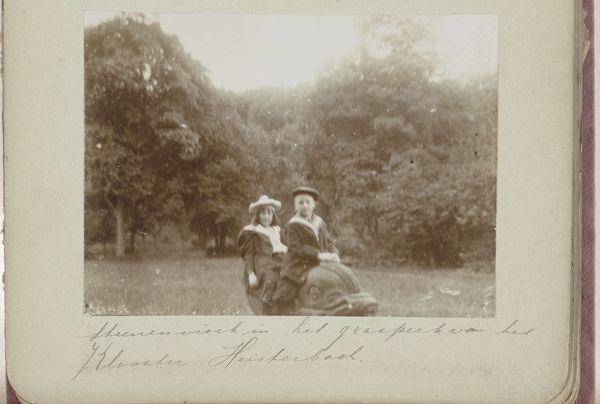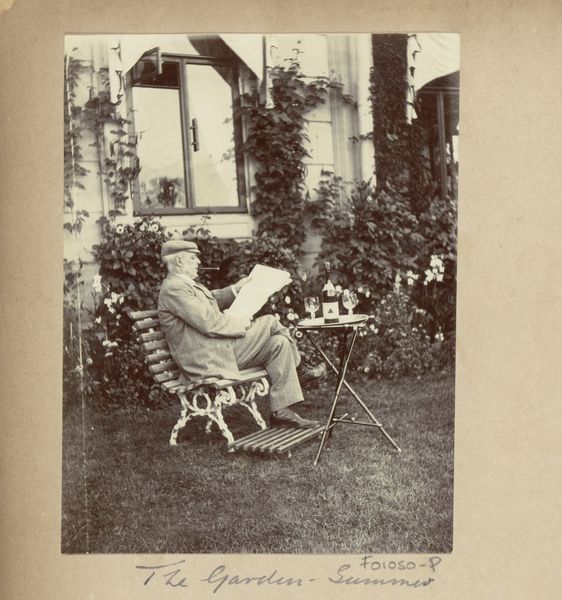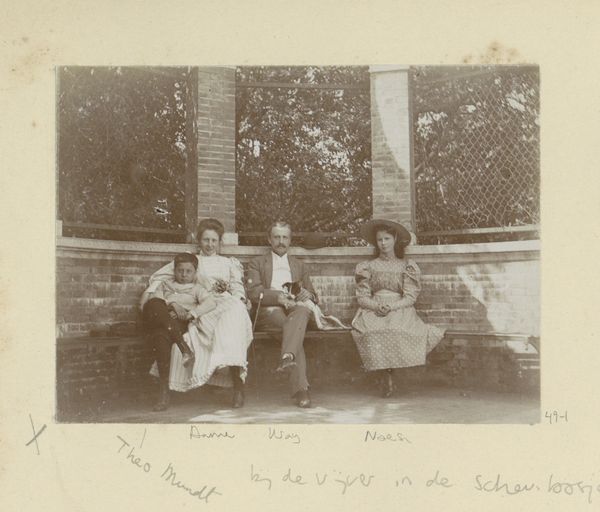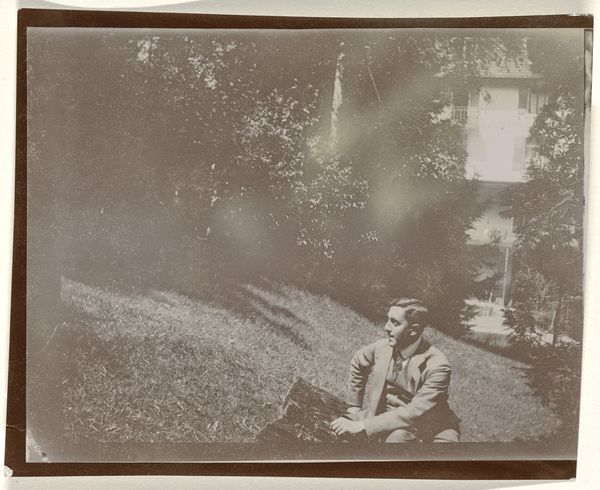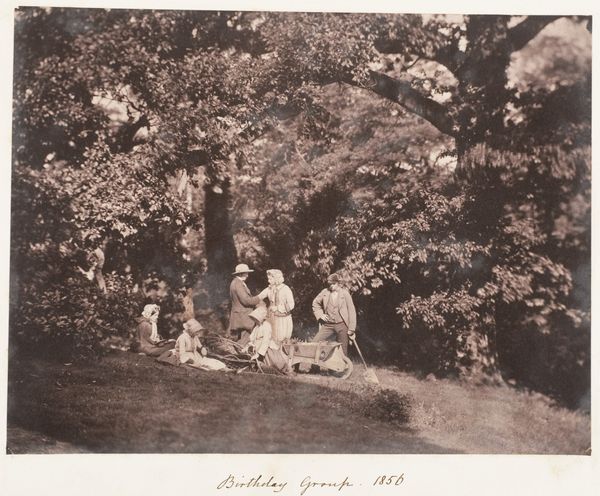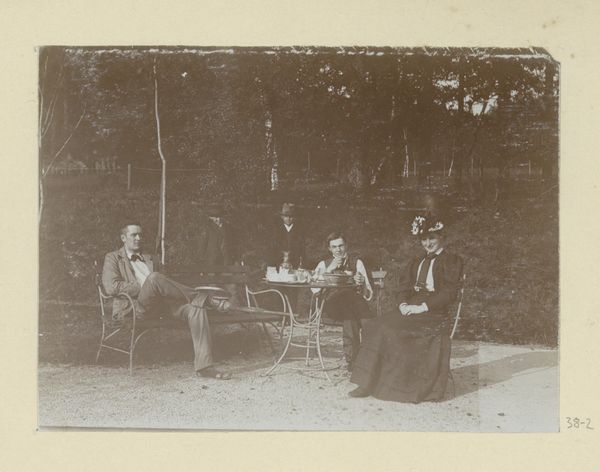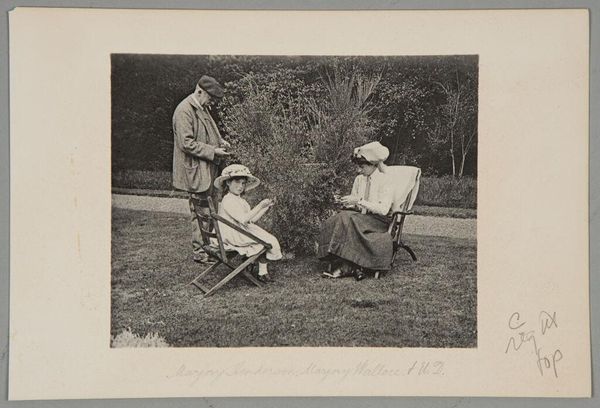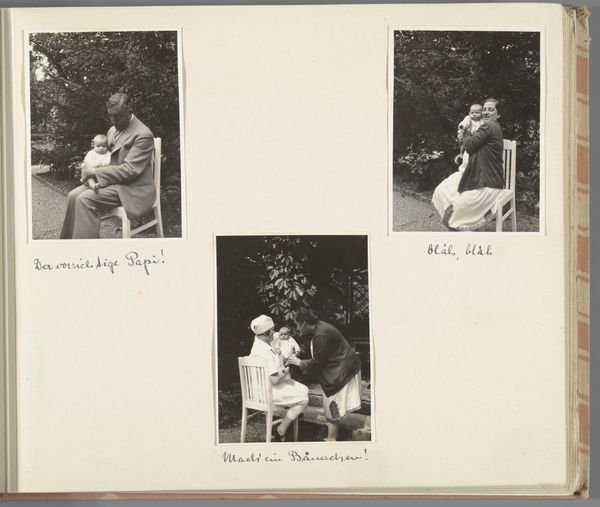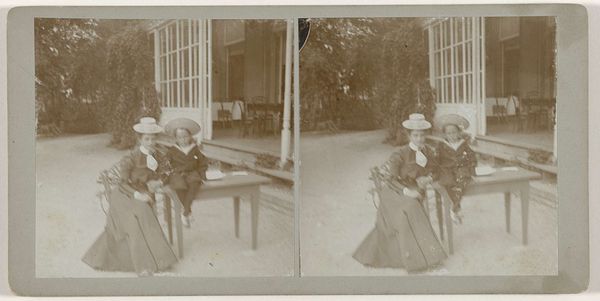
Portret van Grietje Vermeulen-Luitjes op het balkon met een parasol c. 1895 - 1905
0:00
0:00
Dimensions: height 86 mm, width 116 mm
Copyright: Rijks Museum: Open Domain
Editor: Here we have "Portrait of Grietje Vermeulen-Luitjes on the Balcony with a Parasol," a photograph taken sometime between 1895 and 1905. It feels very intimate and personal, like a candid moment captured. What’s your read on this, and how do you interpret the setting? Curator: It's a wonderful example of how photography became increasingly integrated into the domestic sphere during this period. Consider the balcony itself. It represents a liminal space between the private home and the public world. This blurring reflects the shifting social roles of women at the turn of the century. She is protected from the direct gaze but still present within view. Editor: That’s a great point. How would a viewer have understood that, back then? Curator: Think about the rising middle class, with disposable income to pursue hobbies such as photography and travel. There's an implicit message of leisure and refinement. A professional portrait would project status in a formal manner. This shows a private side. It reveals more personality, though also curated to fit the expectation of their social status. Editor: I see what you mean. So, it's intimate but still very conscious of its presentation. Does pictorialism, which the tags reference, have a role? Curator: Yes, absolutely! Pictorialism treated photography as fine art and emphasized tonal effects, which you can see in the soft focus and atmospheric rendering. Pictorialists advocated that photographs be judged by the same criteria as paintings and drawings. In this portrait, the integration of Grietje into a fine art world becomes complete. Do you see any further symbolism here? Editor: Now that you mention it, the parasol seems less practical and more like a fashionable statement, suggesting something about status as well. Curator: Exactly! By drawing attention to everyday objects and settings, photography was starting to carve out its unique space as fine art. Editor: I've definitely learned a lot from seeing how this photo fits into that cultural moment! Thanks. Curator: My pleasure! It’s always a valuable experience to examine the intersection between art and broader social change.
Comments
No comments
Be the first to comment and join the conversation on the ultimate creative platform.
